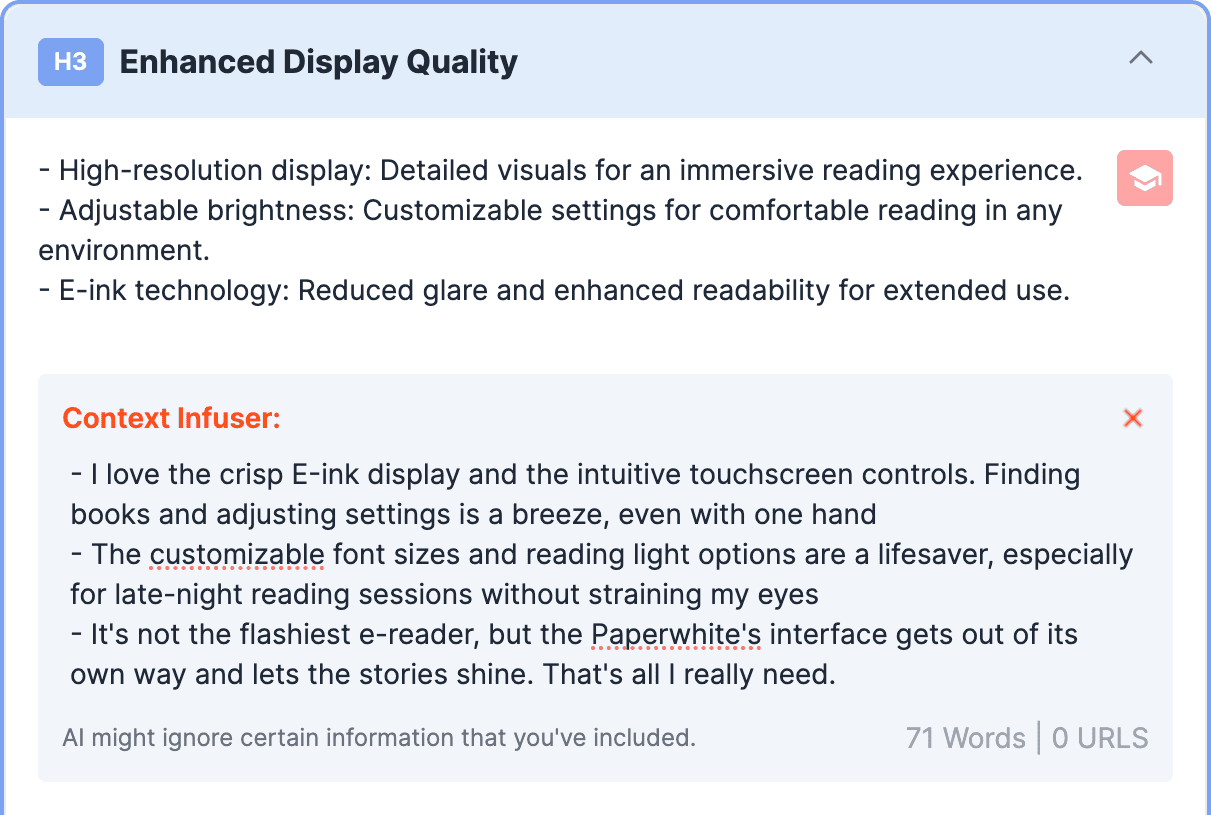Starting an affiliate marketing blog can be a lucrative side income source. Adam Enfroy, a popular affiliate marketer, reportedly rakes in $80,950/month in affiliate revenue alone!
As good as this sounds, in the past, creating an affiliate marketing blog required substantial time and effort.
However, with SurgeGraph’s Product AI, you can now effortlessly launch a profitable affiliate marketing website.
This article will guide you on how to craft high-converting affiliate content in under 5 minutes using SurgeGraph.
What Is Affiliate Marketing? What’s The Big Deal About it?
Affiliate marketing involves promoting products or services and earning a commission for each sale made through your referral.
How it works is simple. A potential buyer looks for information on a product, stumbles upon your content, clicks on one of your links, makes a purchase within a timeframe, and boom: you get a commission cut from the sale!
It sounds pretty straightforward, but to succeed in this, you need to create compelling affiliate content that can rank and appear on search results. Spoiler alert: it takes a lot of effort to pull this off.
SurgeGraph’s Product AI is built specifically to streamline this whole process for you. Instead of having to spend days just writing one piece of affiliate content, you can get it done in just a few minutes.
Why Use SurgeGraph Instead of Writing Yourself or Using Another AI Writer?
You might be wondering: why SurgeGraph? There are other AI writing tools that can craft affiliate content. Heck, you can cut costs by simply writing it yourself.
Here’s 5 key advantages of using SurgeGraph to write your affiliate content:
1. Automated Product Fetching (for Product Roundups)
Most tools require manual research on your part – you have to choose the products and provide the product information like the URL, descriptions, and images.
This process is time-consuming. You would need to spend a day for product curation and another on writing the article.
SurgeGraph eliminates this hassle by providing you with a curated list of the best items, complete with links, product descriptions, and images.
2. Accelerated Writing Process
What used to take days can now be accomplished in minutes.
SurgeGraph takes charge of the writing aspect, generating thousands of compelling words effortlessly. You no longer need to lift a finger in the content writing process.
3. SEO Optimization for High Rankings
Content that doesn’t rank might as well not exist. It won’t get traffic, clicks, which ultimately means zero affiliate earnings.
SurgeGraph ensures that your content is SEO-optimized so it has the best chances of ranking on search engines.
4. Comprehensive Information and Persuasive Writing
SurgeGraph focuses on creating content that resonates with consumers, encouraging clicks on your affiliate links.
At the stage where readers are seeking comprehensive information before making a purchase, it is crucial to engage them effectively.
SurgeGraph crafts content that resonates with consumers, strategically designed to encourage clicks on your affiliate links.
5. Reader-Centric Approach
SurgeGraph’s AI writer heavily emphasizes on providing information that readers are actively seeking for.
This means the incorporation of various elements like product tables, comparisons, TL;DRs, and buying guides to enhance the user experience.
These additions streamline information consumption, catering to diverse preferences and ensuring that readers can easily grasp key details.
In summary, SurgeGraph not only streamlines the content creation process by automating various tasks but also ensures that the resulting content is optimized for search engines and designed to engage and convert readers.
Next, we’ll go through the steps to easily craft high-converting affiliate content with Product AI.
Step 1: Choose Your Niche & Sign Up for an Affiliate Program
The first step is choosing your niche. Consider topics that align with your interests, as this will make it easier to create content. You can also opt for trending niches.
After identifying your niche, the next step is to sign up for affiliate programs relevant to your chosen area.
For example, the Amazon Associates program is a popular choice due to the vast range of products available on the platform. Despite its lower commission rates compared to other programs, Amazon’s product offerings make it suitable for almost any niche.
Step 2: Do Keyword Research
The second step is to do keyword research for topics or products you’re going to write about.
This step involves understanding what people are searching for in relation to your chosen niche. You can use a keyword research tool like SurgeGraph’s to get high-traffic, low-competition, and intent-matching keywords.
Researching the right keywords depends on the type of affiliate article you want to write. Here’s a neat table showing the sample target keywords suitable for each affiliate article type:
| Type of Article | Sample Target Keywords |
| Product Roundup | best running shoes for women best moisturizers for sensitive skin best e-readers 2023 |
| Single Product Review | Kindle Paperwhite review iPhone 15 review Stanley Quencher tumbler review |
| Comparison Posts | iPhone 15 vs Samsung Galaxy S23 Kindle Paperwhite vs Kindle 2022 Nespresso vs Keurig |
Free Tips on Humanizing AI Content

Make your AI content sound human-like

Bypass AI detectors

Humanizing prompts


When crafting affiliate content with SurgeGraph’s Product AI, you have the flexibility to choose from three main types of affiliate articles: product roundup, single product reviews, and product comparisons. Each article type comes with a customized workflow catered specifically for the best output.

Here’s a brief definition of each article type:
1. Product Roundup
Product roundups are articles that showcase a collection of products within the same niche or category. They provide a quick overview of multiple options in one place, making it convenient for your audience to compare different products at a glance.
2. Single Product Reviews
Single product reviews focus on providing detailed insights into a specific item. These articles dive deep into the features, benefits, drawbacks, and overall performance of one particular product.
3. Product Comparisons
Product comparison articles highlight the similarities and differences between two or three products within the same category. This type allows you to directly compare key features such as price points, functionalities, quality, and more.
Step 4: Choose the Products You Want to Write About
Next comes the vital part: the product – the heart of the content.
Obviously, it’s pretty straightforward for single product reviews and product comparisons. The product you’re writing about is what your target keyword is.
The real headache is when you’re writing a product roundup. There’s an endless amount of products out there – how do you select just a few to showcase in your content?
With SurgeGraph, this step is made easy and effortless for you. You can automatically get a curated list of products to write about without going through all the hassle.
Here are a few different options SurgeGraph provides when automating the product-fetching process for you:
1. Get products suggested by the SERP’s top 10
A good way to select products is by looking at what the top-ranking pages are featuring.
By clicking on “Suggest from SERP”, SurgeGraph studies the top-ranking pages for your target keyword and suggests relevant products featured by those pages.
This allows you to align your product choices with popular trends in your niche.
Although this will only return product names without links, you can obtain the links by clicking on “Autofill with Amazon links” for Amazon products or manually inserting links for non-Amazon items.
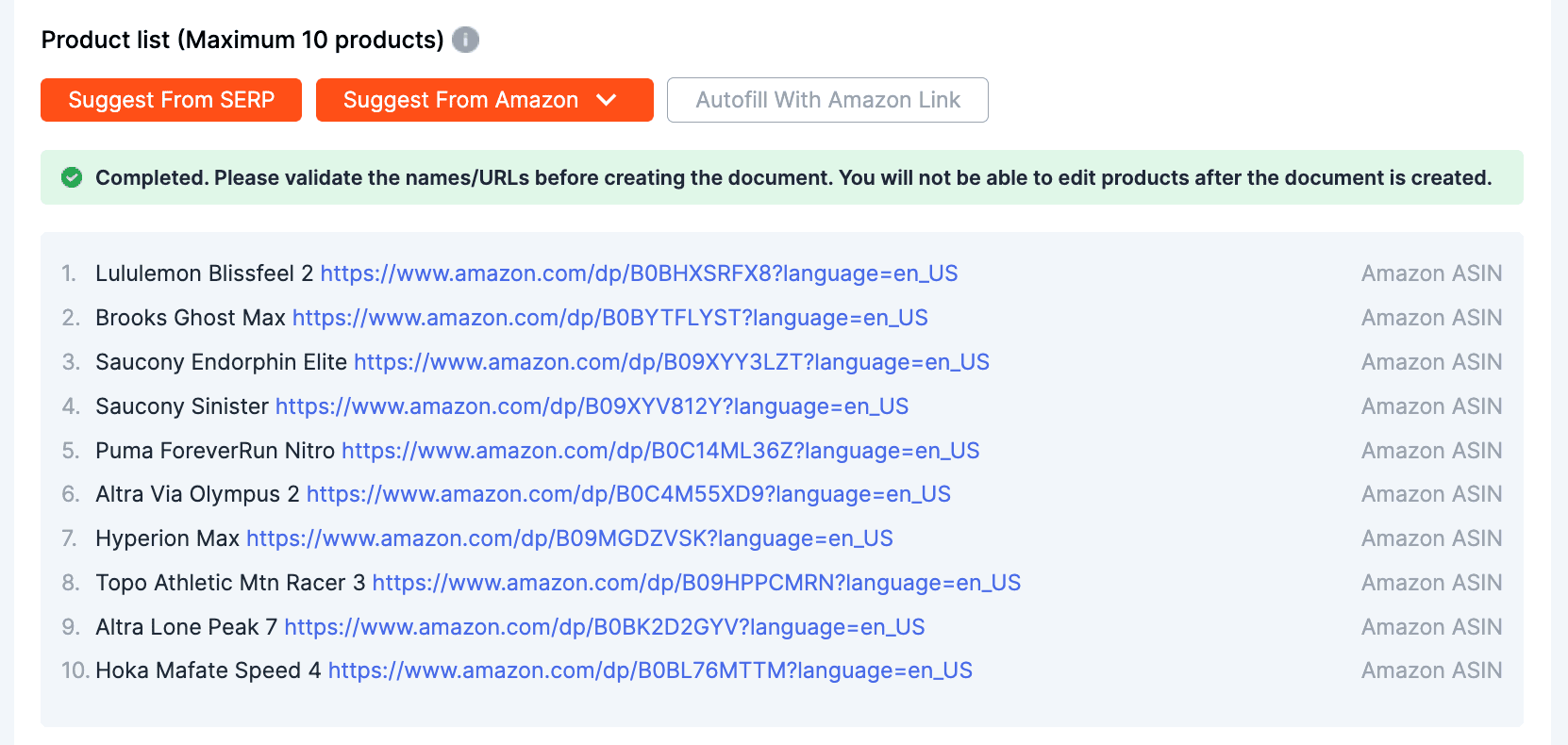
2. Get top products from Amazon
Another effective way is to source top Amazon products directly from Amazon through the “Suggest from Amazon” option.
Then you can specify the sorting filter which affects the set of products recommended by Amazon.
To illustrate this, let’s take the keyword “best running shoes for women” and put into Amazon.
Here’s the set of shoes it returned if we use sort by Featured.
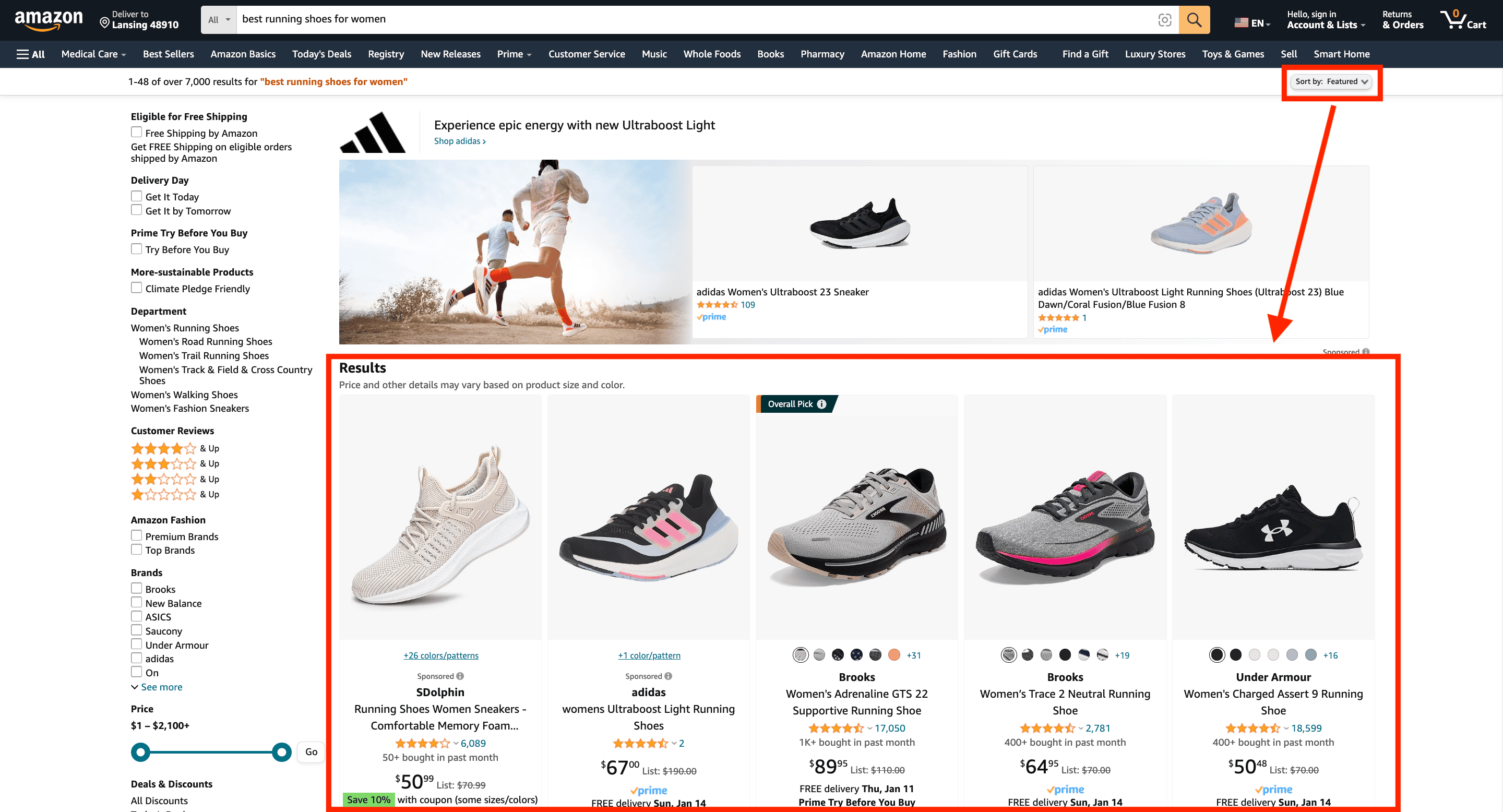
On the other hand, here’s the set of shoes it returned when we sort by Avg. Customer Reviews.
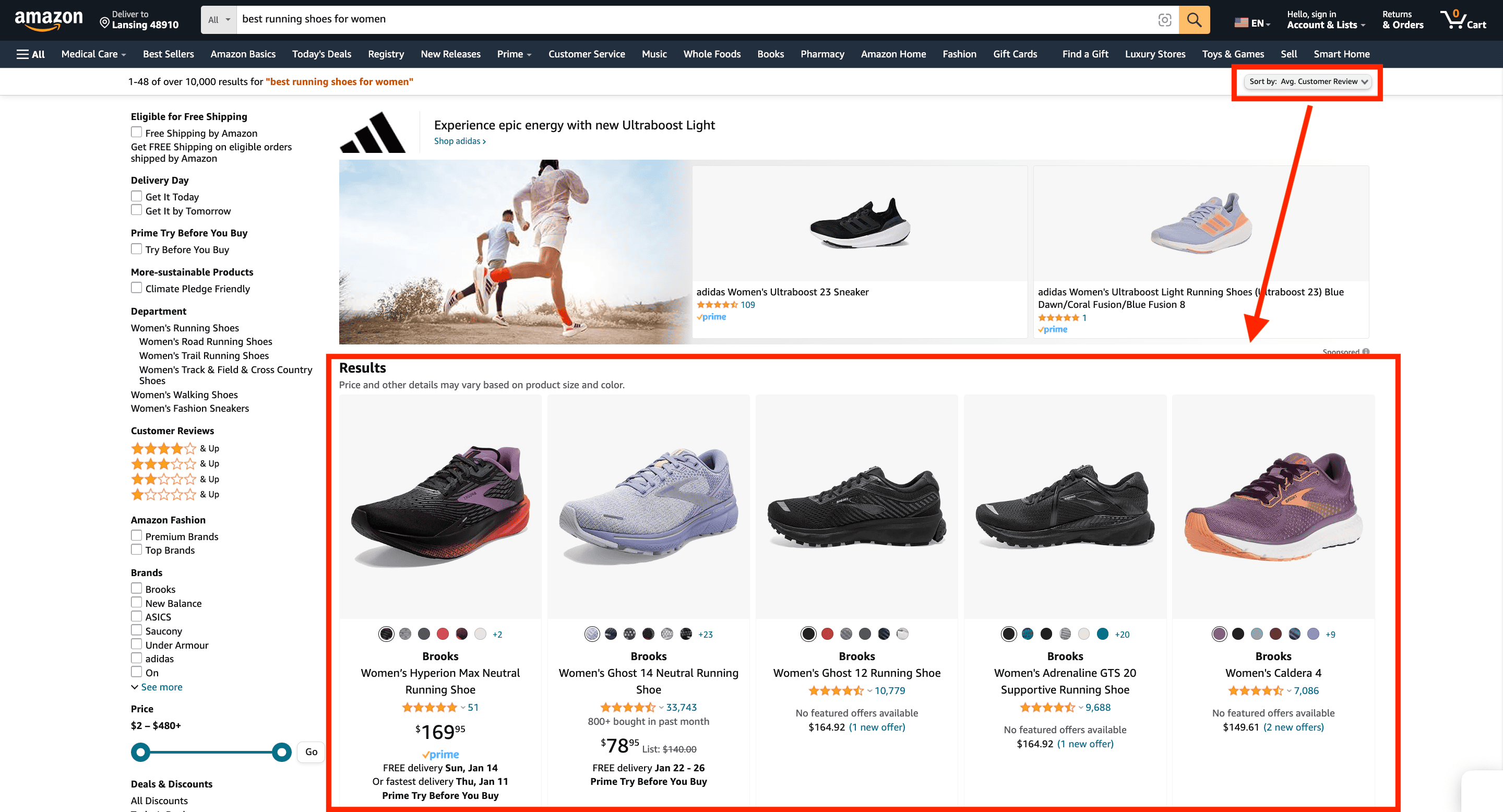
Clearly, different product sorting filters results in a different set of products. So it depends on your requirements and preferences.
Maybe you want to feature the cheapest products, so you want to sort from lowest prices to highest (although this will result in poorer quality and irrelevant products).
We suggest you play around with the sorting filter on Amazon for your target query and see which one suits you best.
The “Suggest from Amazon” feature will also automatically include the product links.
3. Use your own list of products
If you have specific preferences or wish to promote particular products, SurgeGraph enables you to input your own set of items.
Simply enter the product name followed by the product link.
You can also just enter the product name and click on the “Autofill with Amazon links” to automatically retrieve the links from Amazon.
Step 5: Write Content That Answers Readers’ Questions
Now that you’ve selected the products you want to feature, it’s time to write the actual article.
When generating your content, Product AI ensures that each piece offers comprehensive information about the products while addressing common queries from potential buyers.
For instance, roundup articles include a table of product specifications that will allow your audience to compare key features at a glance.
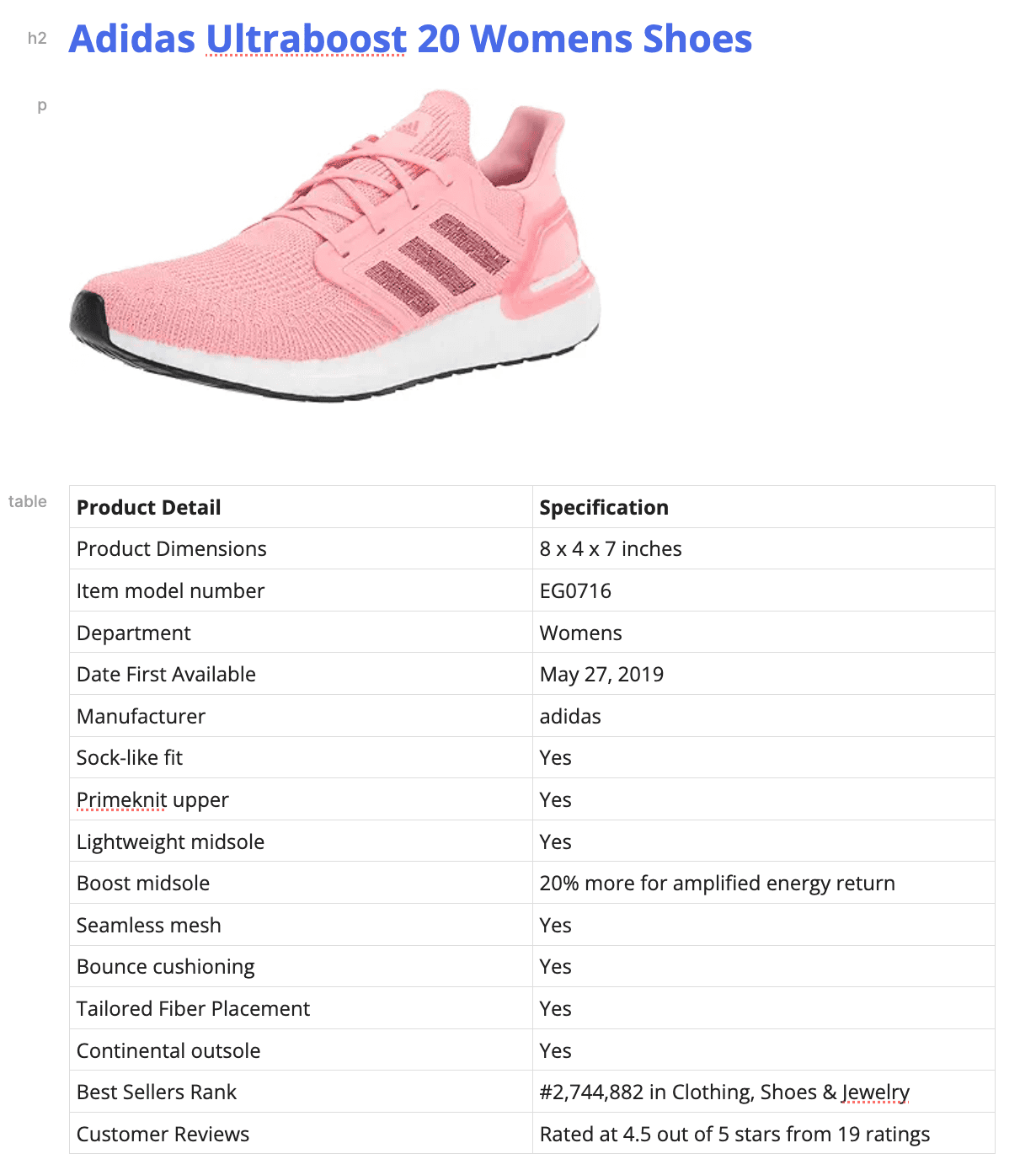
Single product reviews include key features and a TL;DR summary.
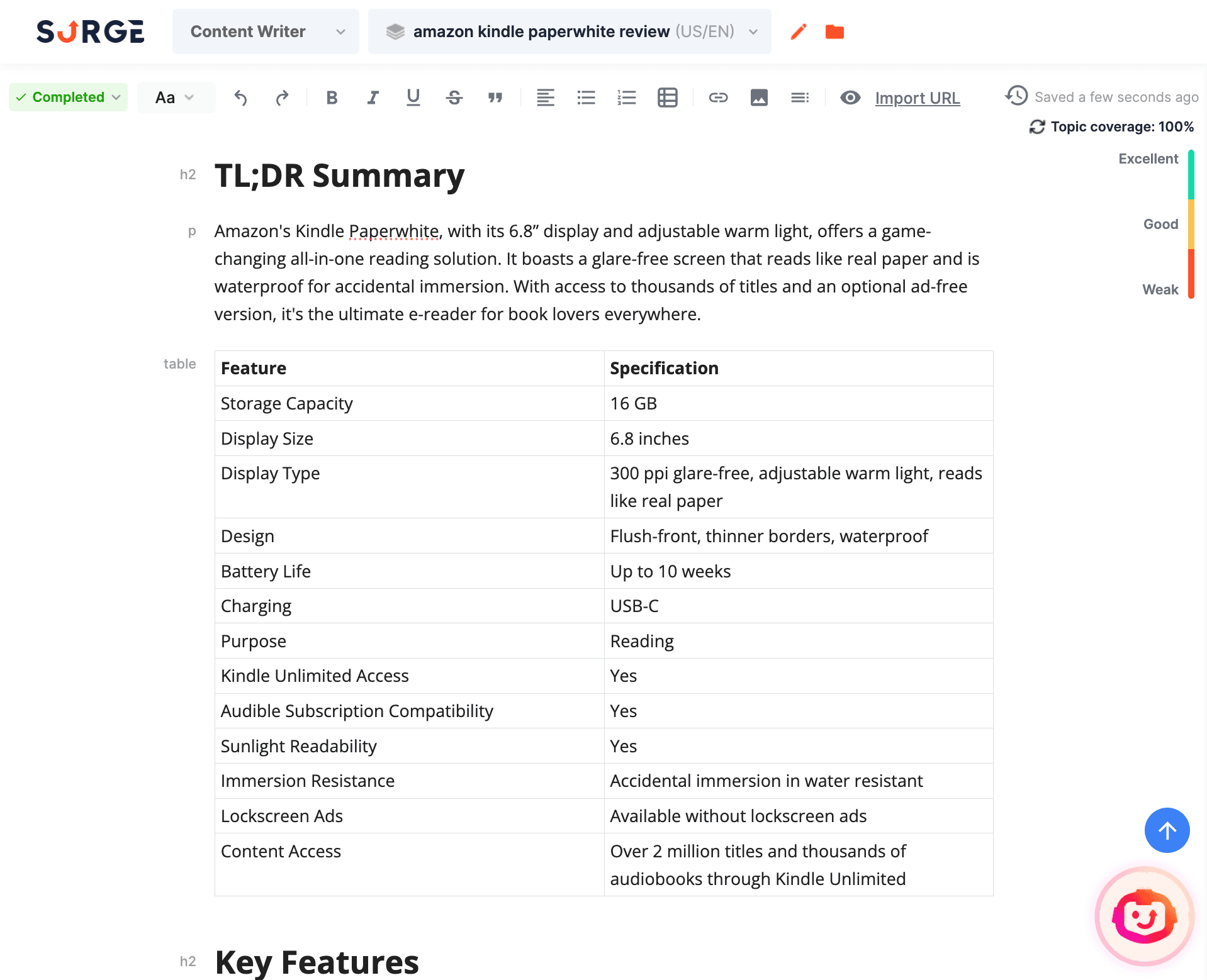
Comparison posts will have a comparison table that provides a direct comparison of the products featured.
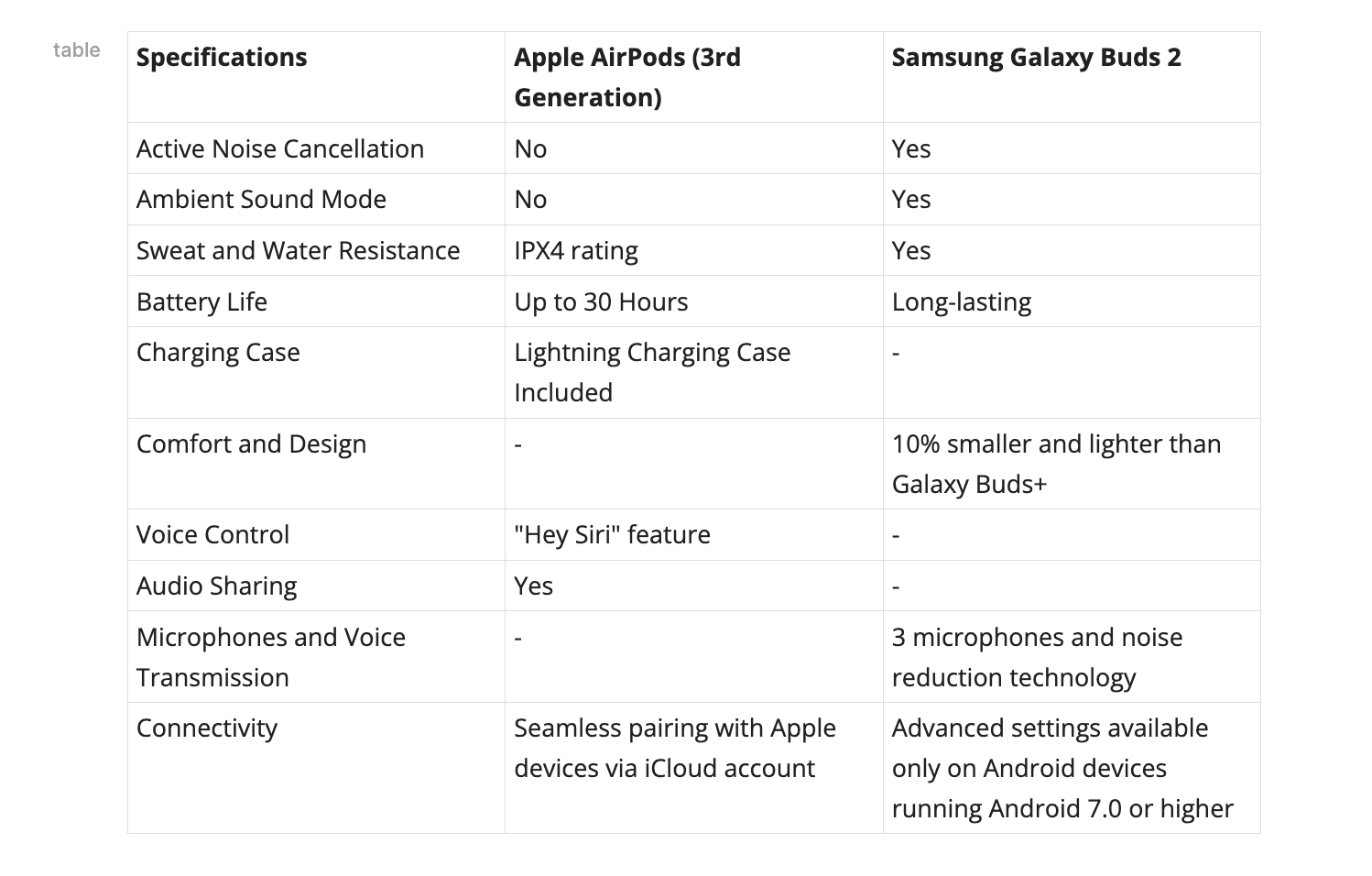
Buyer’s Guide and FAQ sections are also included for all article types. The buying guide serves as a clear guidance on factors buyers should consider before making a decision, while FAQs address any uncertainties your audience may have.
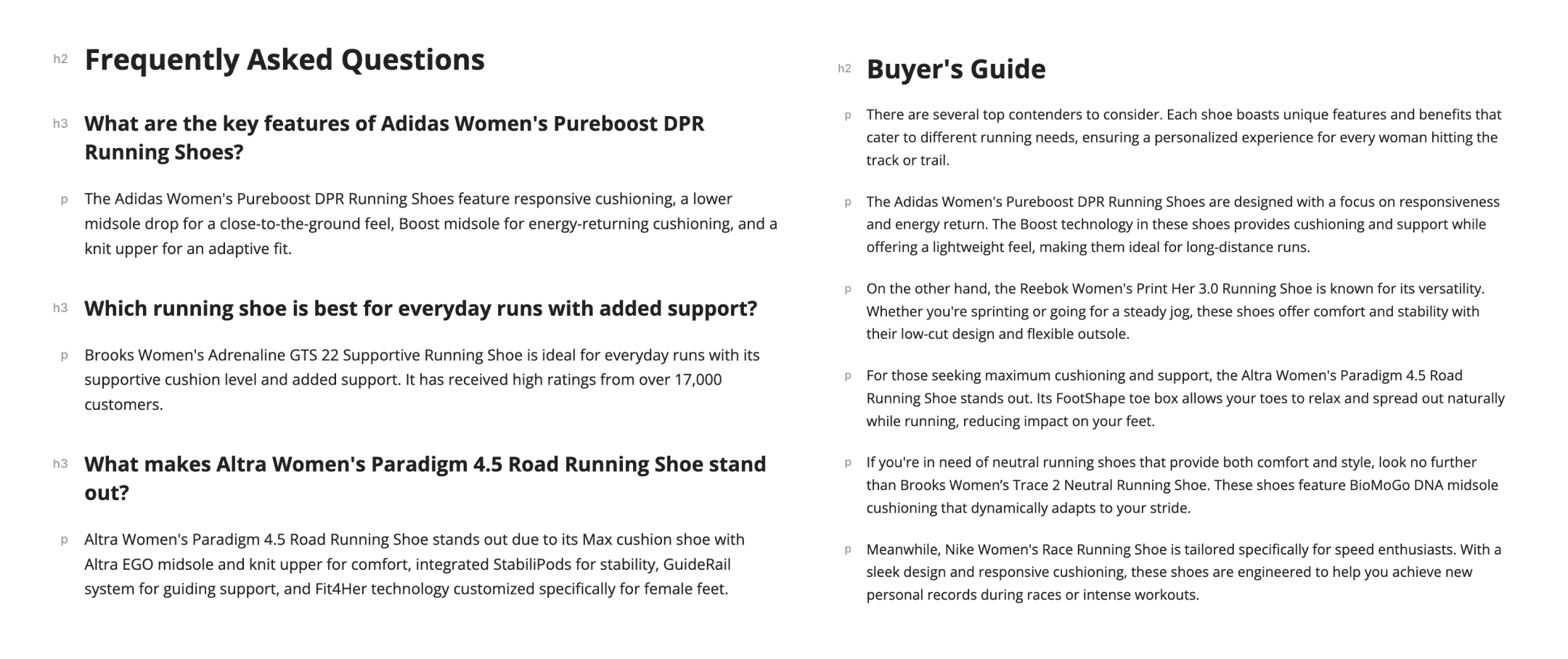
Other than the preset format SurgeGraph writes your affiliate content, you’re also provided with many customization options through the Outline Builder functionalities.
You get full control over the structure of your content and can choose to enhance it with extra details
Free Tips on Humanizing AI Content

Make your AI content sound human-like

Bypass AI detectors

Humanizing prompts


Here’s some extra details you can add through the Outline Builder:
1. Use Context Infuser to add extra information the AI might not have knowledge about.
For example, you can add your personal opinion or experience with the product.
2. Add a “pros and cons” bullet list.
This straightforward format enables readers to quickly grasp the advantages and drawbacks of different products without having to sift through lengthy paragraphs.
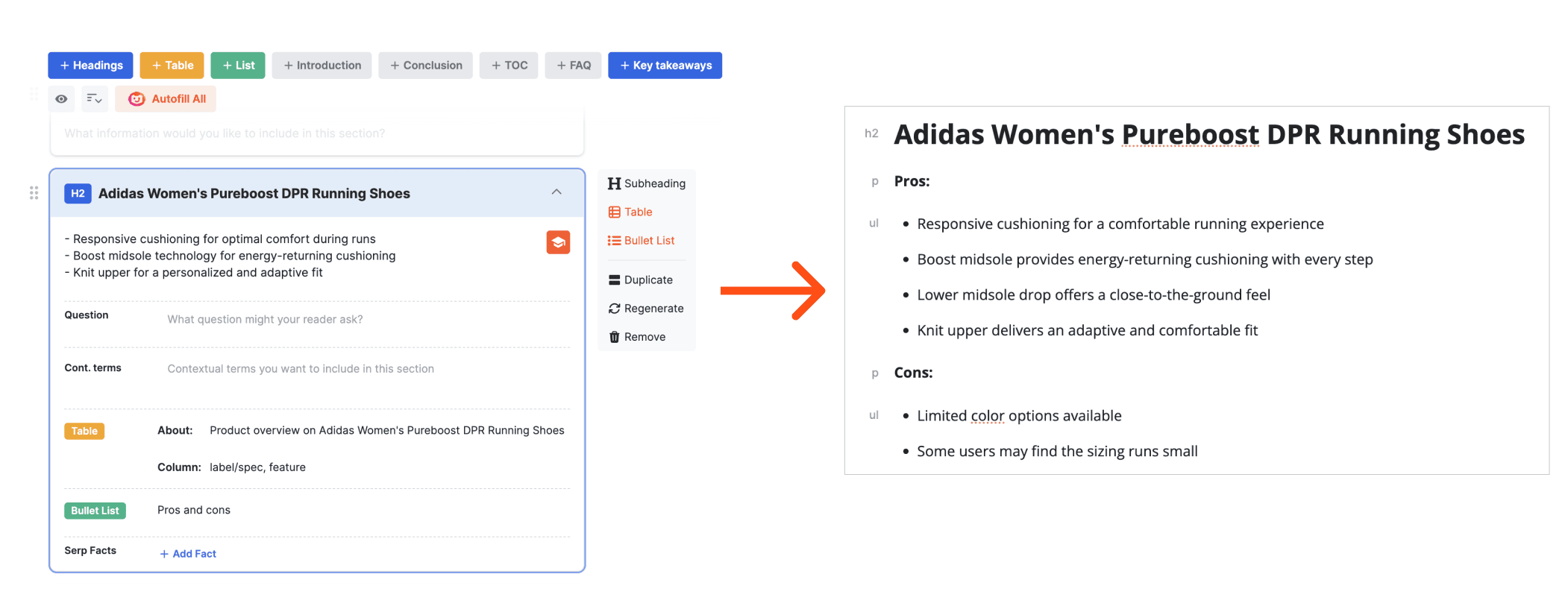
Of course, these are just some of the things you can do. The possibilities are endless with the various features available.
Step 6: Incorporate Your Affiliate Links
Now that you’ve written a compelling article, it’s time to include your affiliate links within your content. When inserting the product links, ensure that they are customized with your specific affiliate URL.
For Amazon, this means appending your affiliate ID at the end of the product URL. This ensures that any purchases made through that link are attributed to you and generate income.
SurgeGraph simplifies this process by allowing you to input your Amazon affiliate ID at the first step, which will then be automatically added to the product links. For non-Amazon products, you can use the Auto optimize custom links feature, or manually insert your affiliate links.

Remember not to overload your content with too many affiliate links, as this might overwhelm or turn off readers. Instead, focus on incorporating them organically within relevant sections of your article.
Step 7: Include Product Images
No one enjoys reading endless text, especially when the content is about actual products.
So the next step is to incorporate product images in your article.
Including product images ensures that your audience can access visual representations of the products you are promoting. Images also help break up large blocks of text and make the overall user experience more engaging.
SurgeGraph provides a convenient solution for those dealing with Amazon products by automatically inserting the relevant images for you.

Step 8: Make Sure Your Content Is SEO-Optimized So It Can Rank and Get Traffic
If your content does not rank, it won’t get any traffic, which means you won’t be getting any commissions.
So before publishing your content, make sure it can rank on search engines by optimizing it for SEO.
To do that, SurgeGraph offers you plenty of support for SEO. Start by looking at your SEO score to see how SEO-ready it is.
If it’s above 80, great! It’s well-optimized and ready to rank. If it’s not, you can do the following to boost your SEO score:
1. Use the Auto Optimizer
The Auto Optimizer will automatically optimize your title, URL slug, keywords, text decorations, and external links in a few clicks.
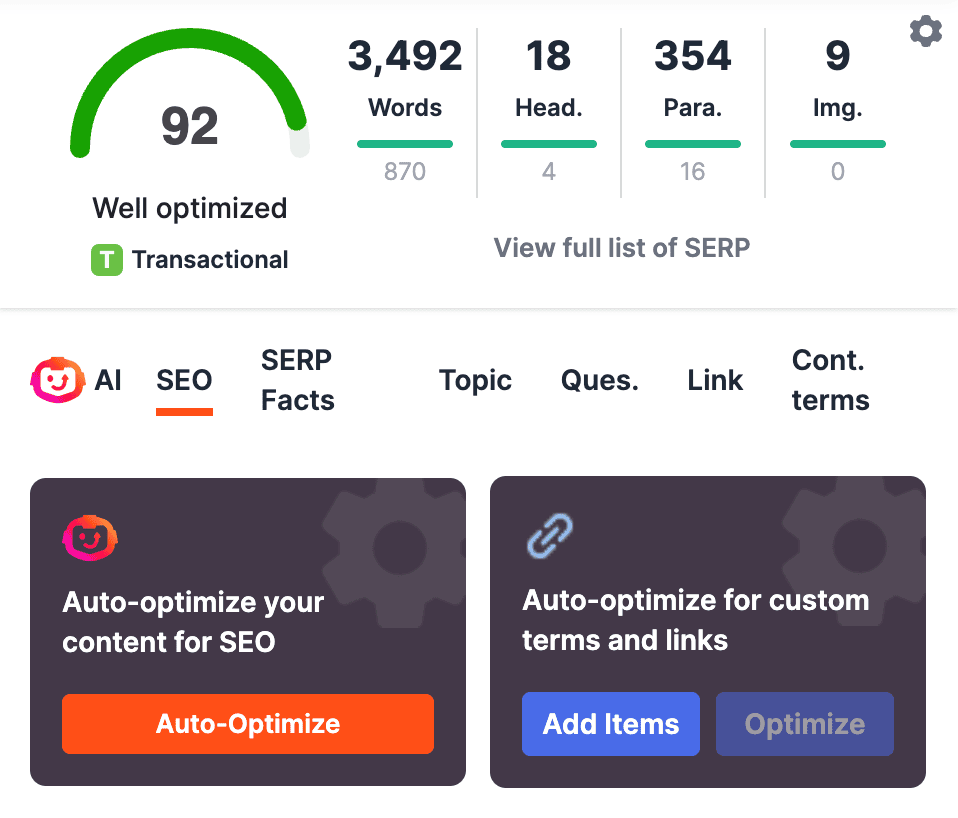
2. Follow the SEO suggestions checklist
This checklist serves as a guidance for various on-page SEO elements. Check off as many items you can for a higher score.
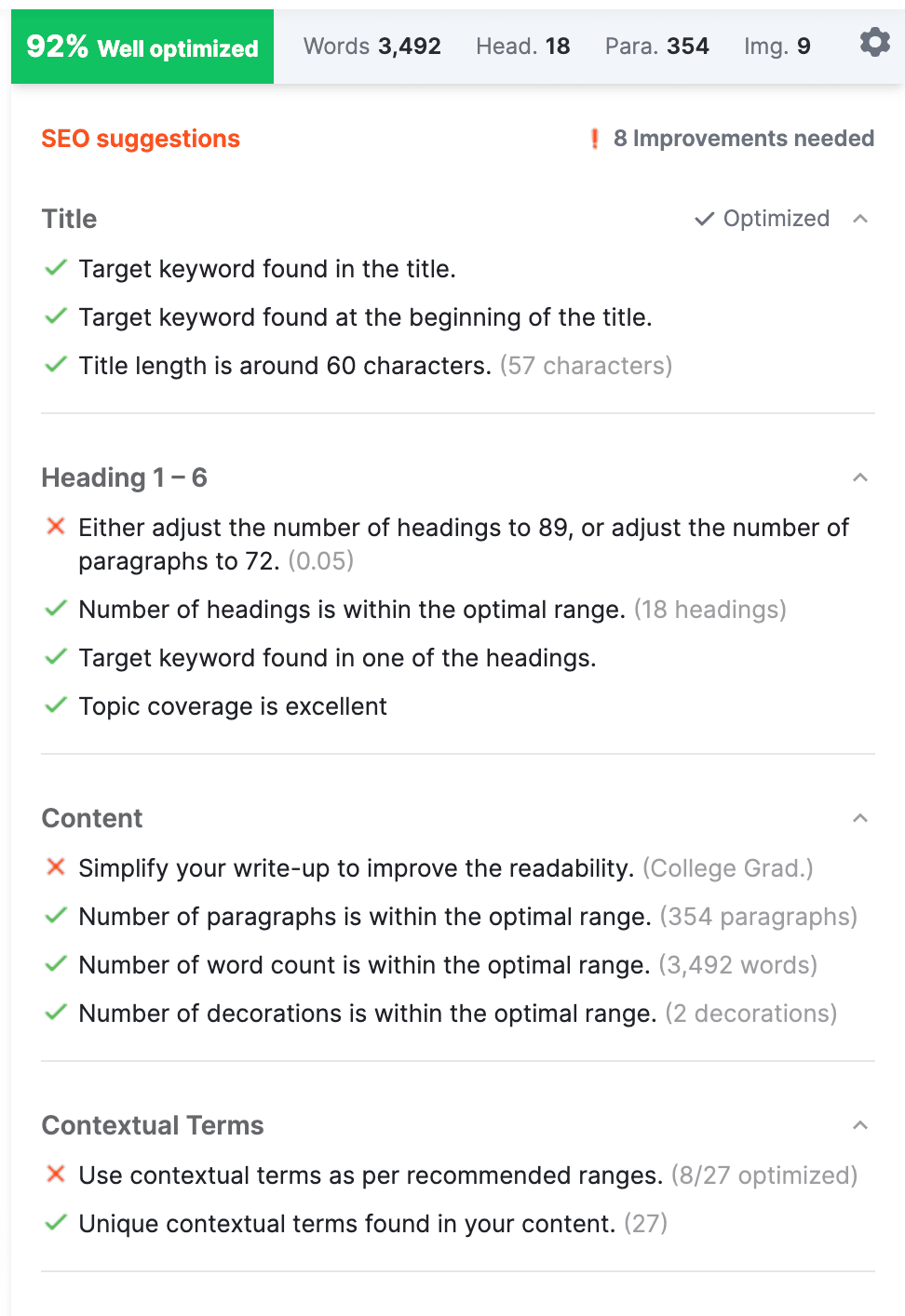
Step 9: Publish More Content for More Commissions
So, you’ve written great affiliate content and made sure it can rank well. What’s next?
Well, the answer is simple – publish more content! With an affiliate blog, having more content increases your opportunities for affiliate commissions.
When your website has a variety of articles and blog posts related to different products or services, it increases the likelihood that visitors will find something they’re interested in.
For example, if your website focuses on outdoor gear, publishing separate pieces about camping equipment, hiking essentials, and fishing gear broadens the scope of potential commission-earning opportunities.
By consistently adding fresh content to your site, you not only attract new visitors but also keep existing ones engaged. This engagement can lead to higher click-through rates and ultimately result in increased conversions and higher affiliate earnings. Imagine visiting a website that hasn’t been updated in months versus one that regularly offers new information – which one would you be more likely to trust and revisit?
Luckily, using SurgeGraph means you can easily publish more affiliate content without having to invest much time and effort!
Ready to Make Incredible Income From Affiliate Marketing?
If you’ve read this article in its entirety, you’re more than ready to start your affiliate marketing blog to earn some serious bucks.
Easily write high-converting affiliate content in under 5 minutes with Product AI now: https://surgegraph.io
FAQs
1. Can I use SurgeGraph to write affiliate content for services?
For now, SurgeGraph’s Product AI only supports writing affiliate content for physical products.
2. Can SurgeGraph write content for non-Amazon products?
Yes. However, please make sure to include the product name and links clearly so we can retrieve the product information and write accurate content.
3. I have more questions. Who do I talk to?
Our support team is ready to help you out. Simply write an email to help@surgegraph.io.

